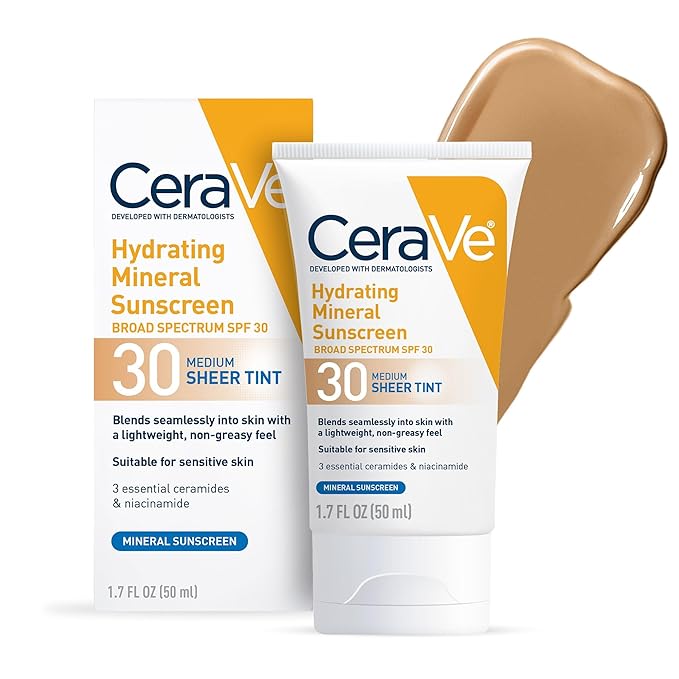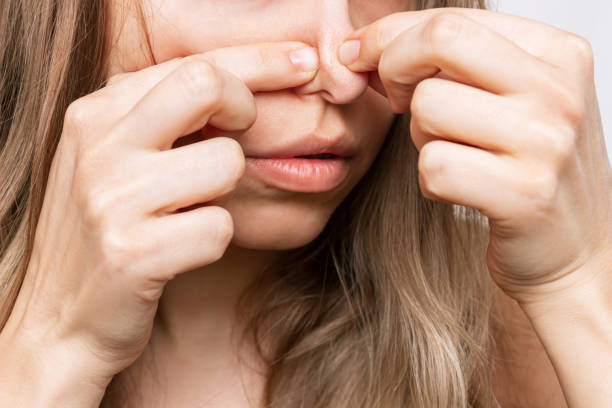
Seen some white spots on your skin and wondering what they are? Whether they happen to pop up on your face, arms, or back, spots on your skin can be confusing and often alarming. So don’t panic! In this article, we are going to break down the common causes of white spots on skin, treatment for the spots, and ways to prevent the spots from returning. Let’s get started and figure out what is happening with your skin!
What Are White Spots on Skin?
White spots on the skin are areas where the pigmentation of the skin is reduced or lost. The size and location of the spots are variable. They’re generally harmless, but they can be part of an underlying condition at times. The spots can have different forms, ranging from small, scattered dots to larger, more shaped spots.
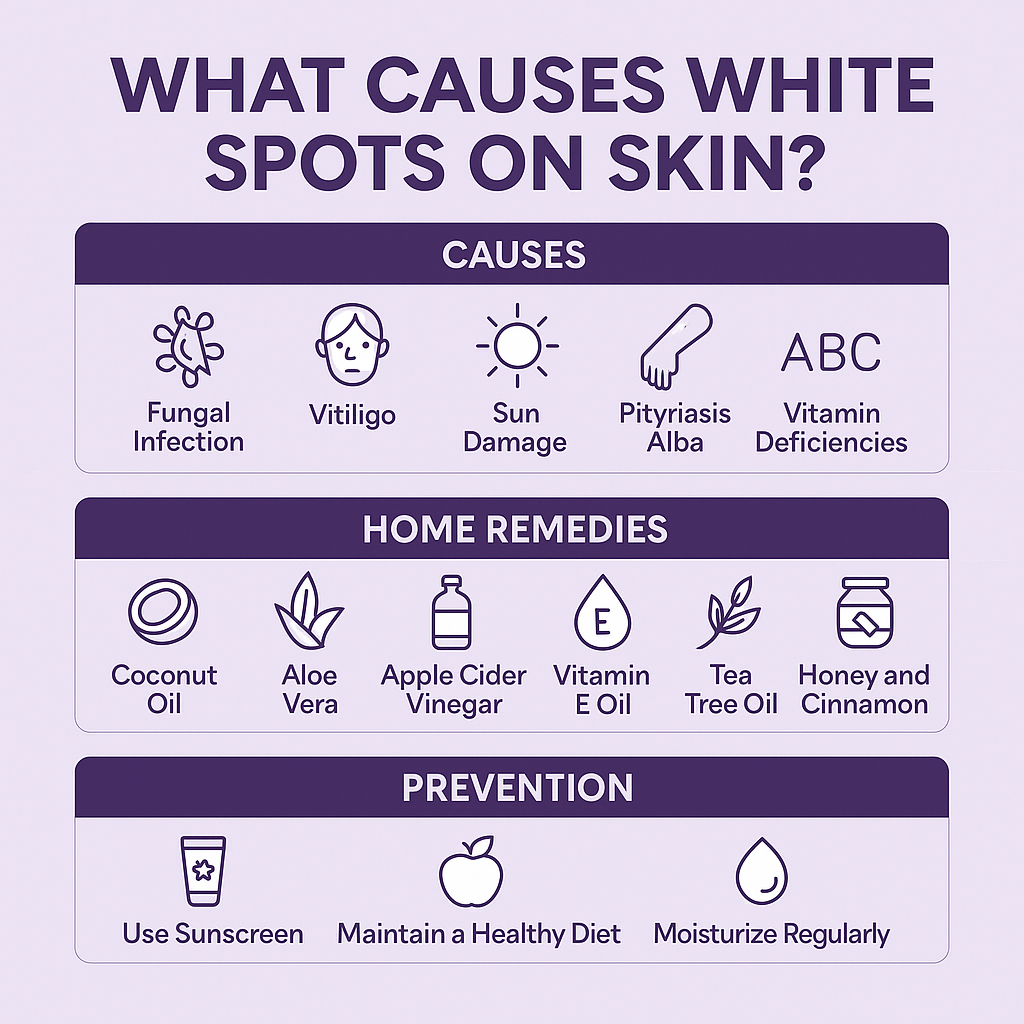
Common Causes of White Spots on Skin
Several factors can lead to the development of white spots on the skin. Here are the most common causes:
1. Fungal Infection (Tinea Versicolor)
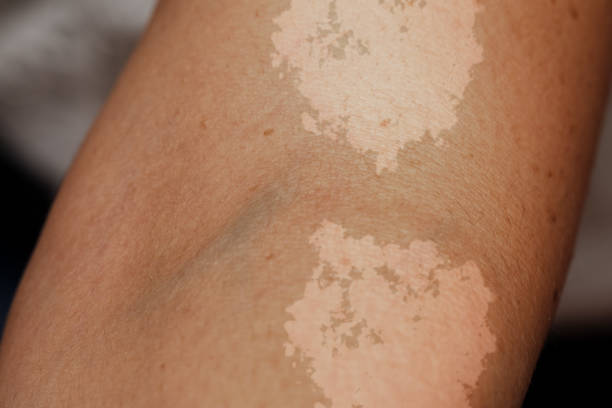
This condition is due to the excessive growth of Malassezia, a yeast that lives naturally on the skin.
- White or light brown spots (occasionally pink), usually on the chest, back, or shoulders.
- Slightly scaly and/or itchy.
- More common in hot, humid climates and in teenagers or young adults.
A 2022 review published in the journal Drugs in Context, Malassezia overgrowth leads to tinea versicolor, and antifungal agents like ketoconazole and selenium sulfide are effective treatments.
2. Vitiligo (Loss of Skin Color)
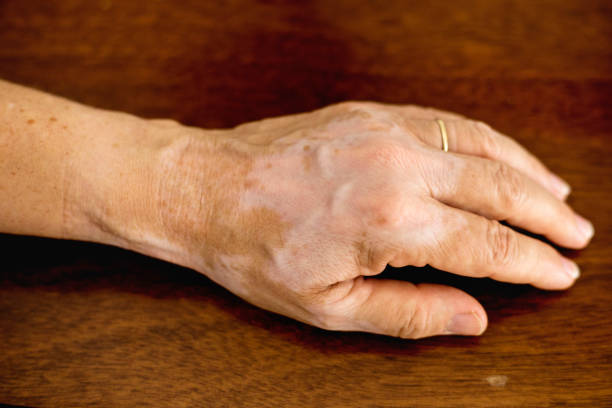
An autoimmune disease in which your immune system attacks and destroys pigment-producing cells (melanocytes).
- Causes smooth, milky-white skin patches.
- Usually begins on the hands, face, or around the eyes and mouth.
- Can have slow or stable progression.
According to the 2024 systematic review, Vitiligo is commonly described as a widespread disease with an estimated prevalence ranging from 0.5% to 1% in the world.
3. Sun Damage (Hypopigmentation)
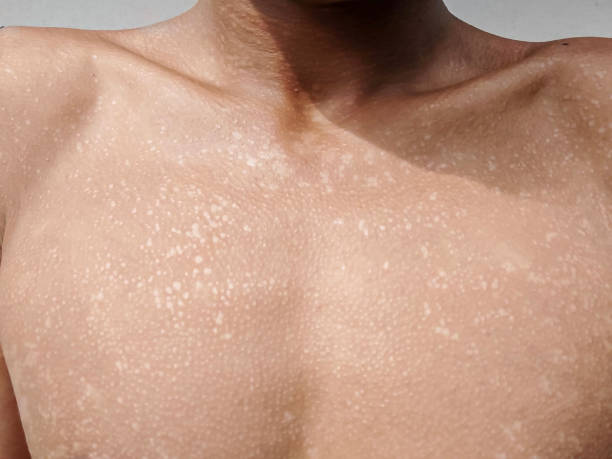
Long-term exposure to sunlight may harm pigment cells in the skin, resulting in tiny white spots. According to StatPearls (2025), states that idiopathic guttate hypomelanosis is associated with chronic UV exposure and aging skin.
- It is common in adults over the age of 40, but can develop as early as the teen years.
- Commonly occurs on the shins, forearms, and shoulders.
- Non-painful and non-itchy.
4. Pityriasis Alba (Mild Eczema in Kids)
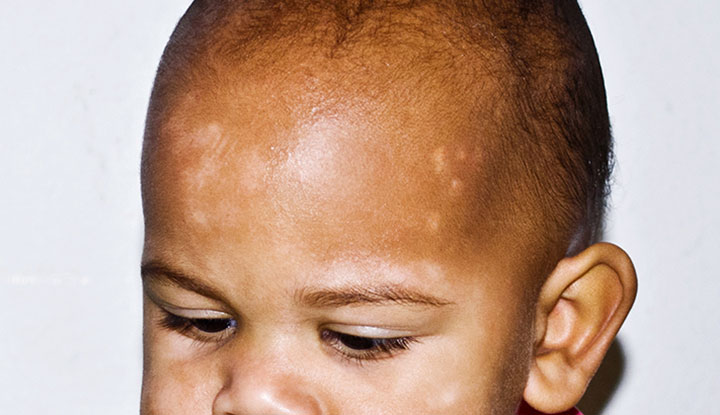
A mild, non-infectious skin condition seen in children and adults. The British Association of Dermatology suggests that pityriasis alba is probably a consequence of mild skin inflammation and a type of low-grade Eczema.
It is characterized by its presentation of pale, dry patches on the face and arms.
- It may become more noticeable post-sun exposure.
- Often associated with dry or sensitive skin.
5. Vitamin Deficiencies
Vitamin B12, D, or copper deficiency can cause loss of pigment.
- May result in patchy lightning of the skin.
- Usually seen with symptoms such as fatigue or numbness.
- Can be corrected through dietary or supplementation usage.
Home Remedies for White Spots on Skin
Although medical treatments and advice are always important for moderate to severe cases, some home remedies may help control or fade the look of white spots on the skin if they are caused by relatively mild situations like sun damage or fungal infections. Here are some natural options to try:
Coconut Oil
Coconut oil has both anti-inflammatory and moisturizing properties, which can help calm the skin and diminish the appearance of white spots. It also has antifungal properties that could be useful if the white spots are the result of tinea versicolor (fungal infection).
How to use:
Using organic coconut oil, apply an even, thin layer to the affected areas before you go to bed.
Leave it on overnight and rinse off in the morning.
Aloe Vera
Aloe vera is a natural healer with soothing, hydrating, and anti-inflammatory properties. It may help calm irritated skin and aid healing if your white spots are sunburn or mild fungal infections.
How to Use:
Apply fresh aloe vera gel directly from the plant to the white spots.
Let it sit for 20-30 minutes before rinsing off with lukewarm water.
Learn more: How to Use Aloe Vera for Skincare
Apple Cider Vinegar
Apple cider vinegar (ACV) has antifungal properties and can help balance the pH of the skin, particularly if your white spots are caused by a fungal infection. It can also help to exfoliate dead skin cells to accommodate new, healthy skin healing.
How to use:
Dilute the ACV with the same parts of water.
Take a cotton ball, dip it in the mixture, and apply it to the affected areas of skin.
Leave it on for 10 minutes, then rinse off with lukewarm water.
NOTE: Do a patch test first to see if you have any irritation before using ACV.
Vitamin E Oil
Vitamin E is a strong antioxidant that can help support skin healing, protect against oxidative damage, and support the skin’s natural barrier function. It may assist with fading scars and spots by promoting skin regeneration and repair.
Instructions for Use:
Gently massage vitamin E oil into skin monthly evening. Apply and leave on overnight.
Tea Tree Oil
Tea tree oil is antifungal and antibacterial, so it can be effective for fungal infections such as tinea versicolor. It can also reduce inflammation and soothe skin irritation.
How to use:
Combine tea tree oil with a carrier oil (coconut oil, olive oil) at a ratio of 1 part tea tree oil to 9 parts carrier oil.
Apply several drops to the white spots and let them sit for about 20 minutes before washing off.
Honey and Cinnamon
Honey has a natural antimicrobial ability, and cinnamon has anti-inflammatory and antioxidant qualities. Together, they can help to fight white spots due to a fungal infection and improve skin health by reducing irritations and promoting healing.
How to Use:
Combine equal parts of honey and ground cinnamon.
Apply to the affected areas of skin. Leave on for 15-20 minutes, then rinse with warm water.
Preventing White Spots on Skin
Although some reasons for white spots are inevitable, there are actions you can take to reduce your risk:
Shield Your Skin from the Sun: Always apply sunscreen with at least SPF 30 and steer clear of extended sun exposure, particularly in prime hours (10 AM – 4 PM).
Keep a healthy diet; make sure your diet is high in minerals and vitamins vital for skin condition, including copper, vitamin D, and vitamin B12.
Moisturize Regularly: Maintaining your skin moist will help to avoid dryness and irritation in sensitive skin prone to disorders like pityriasis alba.
See a dermatologist for an accurate diagnosis and customized treatment advice should the white spots continue or get worse.
Final Thoughts on Treating White Spots on Skin
Skin conditions with white patches can result from a range of causes, including fungal infections and nutrient deficiencies. While most are harmless, it is important to recognize the root cause of white spots on your skin to find a suitable treatment. By protecting your skin from further damage, eating a healthy diet, and seeking professional treatment when necessary, you.
Discover more from The Healthcare Diary
Subscribe to get the latest posts sent to your email.
